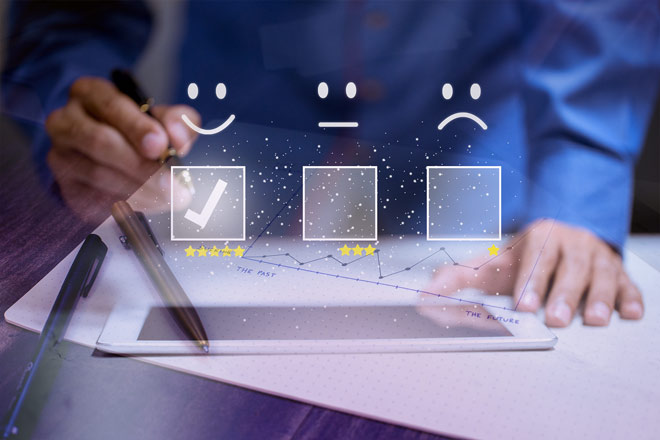
With over 2 billion digital shoppers worldwide, creating an online store is still a good idea. However, starting a decent online business that catches the eye entails more than simply attractive design and effective SEO.
Making a recognizable e-store name is a smart way to begin, and developing a marketing plan early on may offer you a helpful head start.
In terms of development and design, we have compiled a list of what constitutes a vital e-commerce site and a few crucial elements to consider when developing a great e-commerce store.
But before that, let's discuss some of the must-have features for an e-commerce website.
4 Features Your E-Commerce Website Should Have
When scrolling through an e-commerce website, people usually want everything on the first page — the home page.
However, that isn't really possible. So then, which features should you prioritize on your e-commerce website?
For that, we have compiled four must-have features for your e-commerce website. Let's discuss them simultaneously.
1. High-Resolution Visual Content
Product images from various perspectives and video evaluations assist customers in making a selection.
However, if you will not consider the technological aspects, visitor counts may plummet, and loading time suffers.
2. User-Friendly Interface
This might include clickable pictures that eliminate the need for a user to look for information or an autocomplete feature on a search feature.
Creating a consumer-friendly design aims to assist customers in achieving anything they want in the fewest steps possible.
3. Mobile-Friendly Adaptation
As per Hootsuite's Digital Report, 5.112 billion distinct mobile users spend 48 percent of their time online, accounting for two-thirds of the worldwide people.

Furthermore, according to another survey, 79 percent of smartphone users had purchased products or services through their phones in the last six months.
Given figures such as this, it is clear that changing your web design for the mobile web is a must.
4. User Feedback
Having a tool that allows consumers to discuss their good or bad experiences with a product assists other users in making purchasing decisions and gives credence to your site.

10 Things To Consider During E-Commerce Site Development
Following are the ten things you must consider while developing your e-commerce website:
1. Optimization During And Before Developing An E-Commerce Site
Google's latest offering to users reports websites with sluggish loading times — one that leads to negative reputations.
Previously, consumers browsed the web, waited for the webpage to load, and then returned if it did not load immediately; now, they may even avoid visiting a site with a slow load speed entirely.
As per the Think with Google study, if a webpage takes more than five seconds to open, the likelihood of users abandoning the site jumps by 90%.
So that is all the more factor to consider optimizing and ensuring your website runs at peak performance.
The goal of SEO is to increase sales by having your website improve search engine rankings using various methods and approaches.
Incorporating keywords to the material you publish to the site, and meta information to pages – descriptions, and titles – and pictures, is a component of it.
Unfortunately, professionals sometimes overlook that buyers may discover you via picture research unless you provide 'alt' descriptions with your visual material.
A further item that many businesses overlook is employing an SEO expert in the early phases of e-commerce site creation.
Of course, somewhere at the absolute least, the site should debut with all of the needed meta tags, but rather an SEO professional may also assist you with organizing internal linking and page structure.
Moreover, it will help you develop a content strategy, design a mobile-friendly layout, increase load time, and other critical factors.
2. Website Security And Privacy

No one wants to attract viruses when surfing the internet; however, it is not only their PC's security that's at stake.
Security is among the most crucial requirements since you store several caches of fragile client information as an e-commerce business.
If even a byte of data is compromised, your entire business could be at stake; your customers' contact details might be sold illegally, or you might lose vital data forever.
Remember, even a solitary security mishap can tarnish your website's reputation on Google and other search engines.
Google has begun penalizing sites that do not use the HTTPS protocol by employing an SSL certificate. These are more than simply cautions or suggestions.
Visitors would be unable to view sites without these two main components, and you may lose future orders when your certification expires.
3. Registration And Related Issues
Although there are advantages to creating an account on an e-commerce site, such as storing your buying record or the shipping address, many customers prefer a one-click-buy function or a temporary check-out page.
You, like any user, undoubtedly have several accounts for multiple purposes, and some individuals prefer not to register on another site only to place a one-time purchase.
If making a transaction is more important for you than collecting shopper data, consider including a guest check-out tool on your e-commerce website.
Other methods of reminding customers of your website's address include it on the order packing or after the email with the shipping number.
Moreover, you do not have to utilize a registration form. Alternatively, you can ask people to sign in using social networks or a straightforward form asking for their:
- Contact number
- Name
4. Website Search And Filtering Functionality
If your website sells anything, it must offer users sophisticated search capability. And these don't always have to be in the form of a mundane text bar.
A visual search, for instance, is a sophisticated feature in which customers may submit a picture of a product they want, and your web browser will help identify an item that is close, if not identical.
Users usually only browse sections when they do not know precisely what they are searching for and need some ideas. And a quick search will yield the item they require in only a few clicks in other circumstances.
And since some people may not recall the product's actual name, you may wish to categorize yours with synonyms or keywords.
5. Payment Options
When you are just starting with an e-commerce site, including all potential payment alternatives may be too much, yet merely giving one restricts you to buyers who utilize this option.
At the same time, unexpected shipping prices (55 percent) and a lengthy check-out procedure (26 percent) are significant reasons for shoppers abandoning their shopping carts.
Moreover, the 2019 Payment Methods Report found that 6 percent of them might abandon you due to insufficient check-out alternatives.
And as per Hostgator, the most well-known payment methods are:
- Google Pay
- Apple Pay
- American Express
- Square
- Masterpass
- 2Checkout
- Stripe
- PayPal
Due to your offering type, you may also want to look at some cryptocurrency choices as its popularity proliferates.
6. CMS Integration
A CMS (Content Management System) allows you to centrally manage and store your textual and visual material alongside your marketing collateral.
Users can also add or alter new information, and the modifications will be displayed on the site after it is published.
On the other hand, a content management system (CMS) can also assist your personnel in responding to client tickets more quickly.
Moreover, you can leverage the expertise of an experienced creative content writing service to add relevant and impactful content to your website
7. Shipping Rates
Unusual shipping fees, as previously stated, are the cause for 55% of shoppers to abandon their carts.
It might be because they are unaware of the rates, expect a smaller sum, or have additional expenses.
When people are shopping online, they are looking for ease. Therefore, if you do not provide free shipping, users should be able to access data related to shipment alternatives and pricing, along with a hyperlink on each product page.
8. Mobile Functionality
As per Criteo's 2018 Global Commerce report, mobile devices account for nearly half of all online purchases.
And since individuals tend to buy through a smartphone application, your conversion rate will be higher if your e-commerce experience is easily adaptable to mobile sites.
For instance, Walmart Canada increased site conversions by 20% using a more flexible design. In addition, they recorded a whopping 98 percent rise in mobile orders.
Given that many consumers utilize mobile devices every year, it requires investment in flexible design elements such as customizable typeface and picture size and smartphone features like invisible menus.
On the other hand, the product descriptions on the mobile website must also be optimized.
9. Functional Shopping Cart Design
We don't require any statistics to prove that online consumers prefer basic shopping carts. Although a basic shopping cart requires fewer halts than usual, there are techniques to improve its usefulness.
You can, for instance, have three sorts of customers registered, unregistered, and those who choose to stay anonymous.
Whenever a customer taps on the shopping basket in the first stage, it may prompt them to register, log in, or purchase as a guest.
When users log in or register, they must be instantly returned to their complete baskets; trying to seek the same products again might be frustrating.
Furthermore, you may do a one-step transaction, in which every stage is included within a single dynamic box that changes instantly as a user enters data.
On the other hand, you may also include upselling and cross-selling in your shopping basket by having an area with items that a customer might be interested in.
But, again, that seems to be something to think about when you're building your e-commerce site, as you will need to select how you will separate the most related items to a specific consumer.
10. Proper Product Description And Showcase

Users desire great content in addition to convenience. High-resolution photos, video reviews, and detailed product information all influence conversion.
The disadvantage of online shopping is that buyers cannot try, feel, or see the goods. Therefore all they can consider before spending their money is product descriptions.
Therefore, remember that including specific dimensions in clothing, usage objectives in equipment, and energy usage in machines can persuade buyers to purchase your goods.
Wrap-Up
There is undoubtedly a lot to think about when creating an ecommerce site. Hence, we have firsthand knowledge of all the elements, details, and technologies required to make a user-friendly, efficient, elevated ecommerce website that will appeal to consumers.
And since you may want to utilize e-commerce plugins on WordPress or various portals like Shopify, it is not exactly straightforward.
Furthermore, when you decide to engage an e-commerce web development business, make sure you select one that can create the ideal webshop for you in both appearance and performance.
On the other hand, remember the elements mentioned above when creating your e-commerce store.
And finally, if you need assistance, you can find several affordable web design services to help you develop the best e-commerce store.








